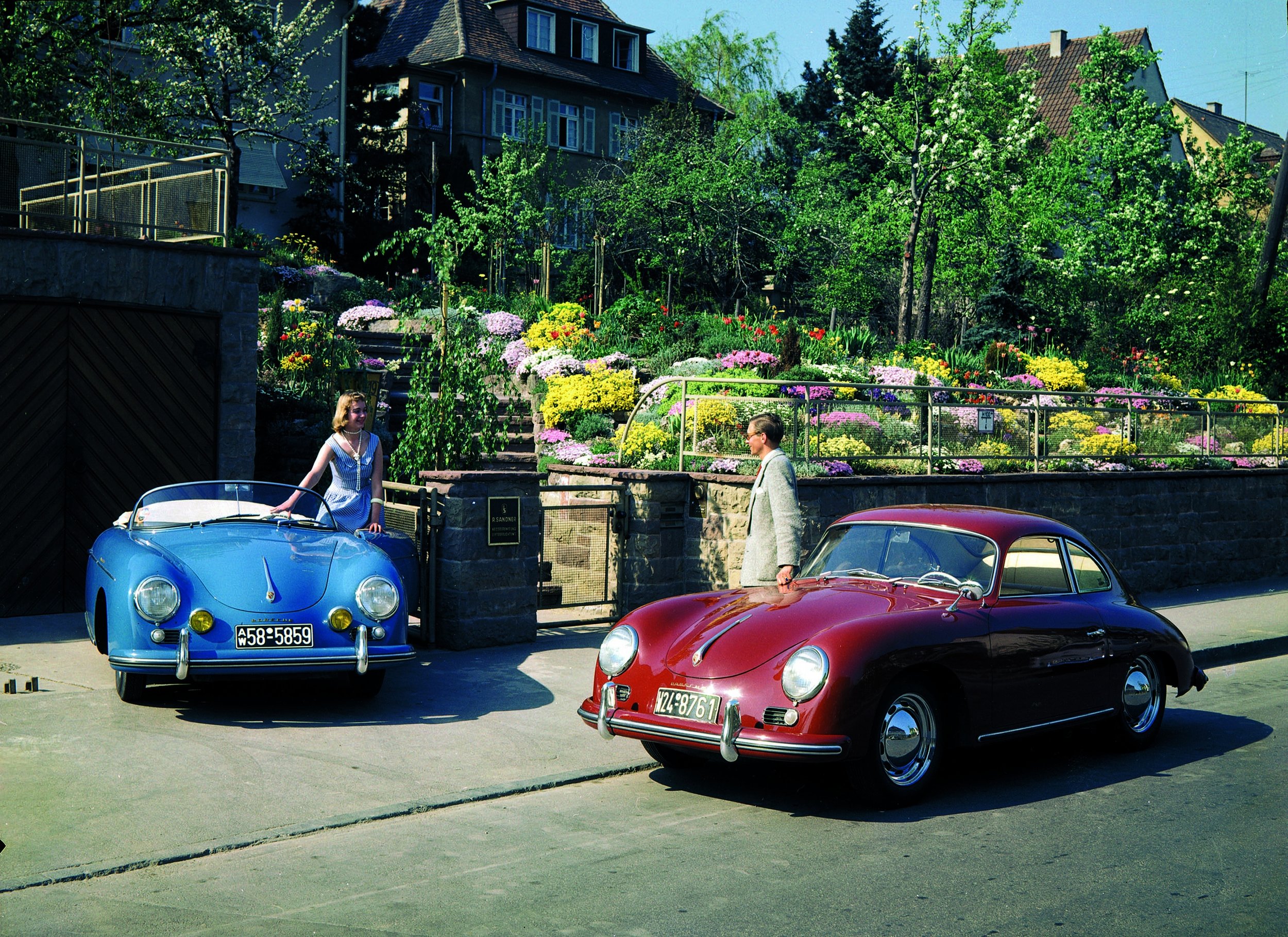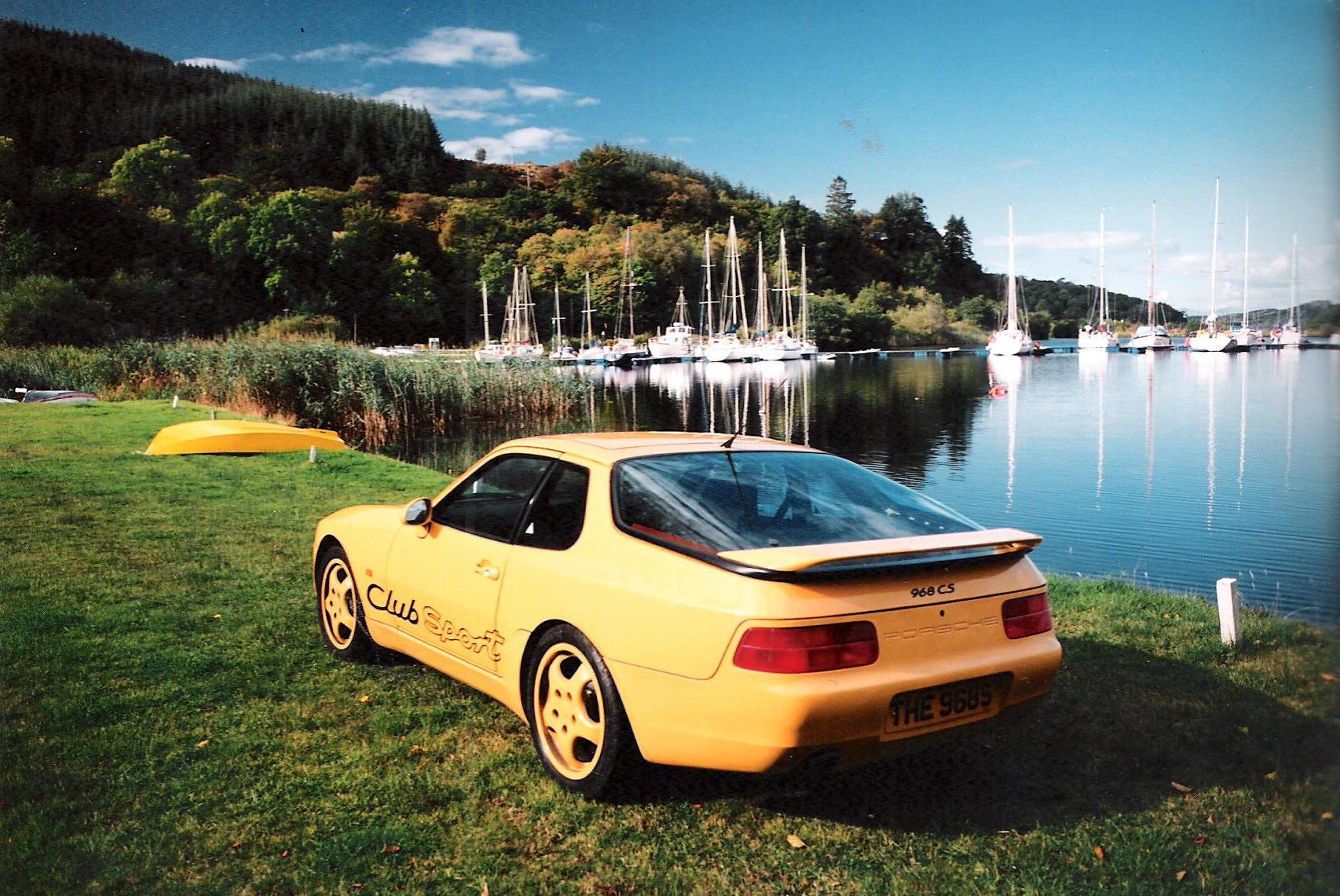Among the handful of car designers with creative genius, as opposed to a mere talent for engineering, Ferdinand Porsche’s reputation is secure. Bugatti’s artistic flair, Royce’s “infinite capacity for taking pains”, even Colin Chapman’s prolific inventiveness with Lotus are overshadowed by a man who not only gave his name to one of the world’s most coveted cars, but also made him a sort of automotive Leonardo da Vinci.
Ferdinand (standing above) and Ferry try a Volkswagen air-cooled cylinder for size on an early Porsche..
Porsche set his stamp on design with racing cars - the pre-war Auto Union was one of his – and with the humdrum Volkswagen Beetle. It had been on his drawing-board for years before Hitler took it up as a political instrument, an expression of German industrial regeneration in the doom-laden 1930s. And just as the Führer exploited the architectural and organisational flair of Albert Speer, so he drew on Porsche’s expertise for his People’s Car then, in wartime, the Tiger tank.
This was a mistake. Enlisted for one of the most formidable armaments of World War Two, Porsche worked with manufacturer Henschel on his hobby-horse, hybrids with petrol engines supplying power to hub-mounted electric motors. He had used them in 1914 on an artillery tractor for the Imperial Austrian Army but now they were impractical in resource-strapped Germany. Ninety Porsche-built prototypes were adapted for 65ton Panzerjäger Tiger “Ferdinands” with 88mm guns, successful on Russian steppes but unwieldy elsewhere.
Lohner Porsche.. At the turn of the 20th century., visionary. Ferdinand pioneered making wheels as free-standing electric motors. A reinvention in the 21st.
Porsche’s hybrid dreams are now being resurrected for the 21st century. Likewise his prescient Auto Union of 1934, too demanding to drive in the 1930s, was adapted in the 1950s by Surbiton empirical engineers John and Charles Cooper. Their Cooper-Climaxes took Jack Brabham to Formula 1 championships in 1959 and 1960. No front-engined racing car has been competitive since.
Porsche pre-dated Cooper with the Cisitalia, a low, 12-cylinder, mid-engined design of 1947, built on lines Ferrari didn’t manage for another 20 years. The Cisitalia had four-wheel-drive, rejected by Formula 1 in favour of aerodynamic appendages. Porsche was a generation ahead. He had already tried them on a Daimler-Benz Record car of 1938, now in the Mercedes-Benz museum. A rebuilt Cisitalia went to the Donington Collection.
Ferdinand Porsche was born in Maffersdorf, Bohemia in 1875 at the Austro-Hungarian Empire, now Vratislavice nad Nisou in the Czech Republic. Aged 15 he was experimenting with electricity and, following apprenticeship in Vienna, designing electric cars. The Lohner-Porsche system of hub-mounted electric motors was a technical tour de force in 1900 but, like the Auto Union, years ahead of its time.
Porsche’s connection with motor sport began in 1909, when he joined Austro- Daimler, designing a car for a contest sponsored by Prince Henry of Prussia. His cars swept the board, the designer at the wheel, and Porsche captained the Austro-Daimler team in Austrian Alpine Trials.
He worked for Mercedes from 1923, developing the Model K and a 300 horsepower shortened and lightened version SSKL. In 1930 he set up a private design bureau in Stuttgart. Dr. Ing. h.c. F. Porsche GmbH Konstructionen und Beratungen für Motoren und Fahrzeugbau. With not much call for extravagant racers during the Great Depression, Porsche turned to a small, rear-engined, air-cooled car for motorcycle maker Ziindapp. His chassis included a novel suspension using torsion bars, effectively coil springs straightened out, which took up less space and allowed wheels sprung independently.
Zundapp dropped out when its two-wheeler sales picked up. Porsche tried to sell the design to NSU, becoming so celebrated he was invited to settle in the USSR and design a Soviet people’s car.
Auto Union became a client with the Grand Prix racing car Hitler demanded for 1934, “as a measuring stick for German knowledge and ability”. Its only real shortcoming was swing-axle rear suspension with the back wheels moving through an arc, gripping only with the edges of narrow tyres on bump and rebound. It was this that gave them a treacherous reputation not the rear-mounted engine.
Porsche remained true to swing-axles and rear engines for the VW backed by the Nazis. Mercedes-Benz was ordered to build 30 prototypes each tested for 50,000 miles through Germany by teams of SS drivers. Gullible citizens saved for VWs by purchasing stamps although few were forthcoming before the factory went over to military versions. The swindle only came to light after 1945, by which time Porsche was imprisoned by the French, who took the opportunity to consult him about their new small Renault, the 4CV, designed, to nobody’s surprise, with a rear engine and swing axle suspension.
1955 Porsches, 356 Speedster and Coupe.
Porsche’s design office was still in operation, now in Gmund, Austria, under his son Ferry. On Dr Porsche’s release by the French under a ransom paid for by the family selling the Cistalia design to a rascally Argentinian, work had begun on a new sports car bearing the proprietor’s name. At first little more than a developed and rebodied Volkswagen, in time it developed the charisma of a classic.
Ironically, beyond its VW heritage Professor Porsche had little influence on the only cars bearing his name. By his 75th birthday, in 1950, barely 300 had been made and sold. Yet Ferry and his sister Louise Piëch had established a business empire that would make the family among the wealthiest beneficiaries of the German economic miracle. As for the veteran designer, two years in prison took their toll; Dr Porsche suffered a stroke in 1951 and died the following January.
PORSCHE ROAD TESTS:
The author road tests a Porsche 1600SC for The Motor in 1964.
More Porsche tests by Eric Dymock, motoring correspondent, The Sunday Times 1993. A 968 Club Sport that fitted, “like a well-made suit,” photographed (below) at Bellanoch, Crinan, on the West Coast of Scotland.





